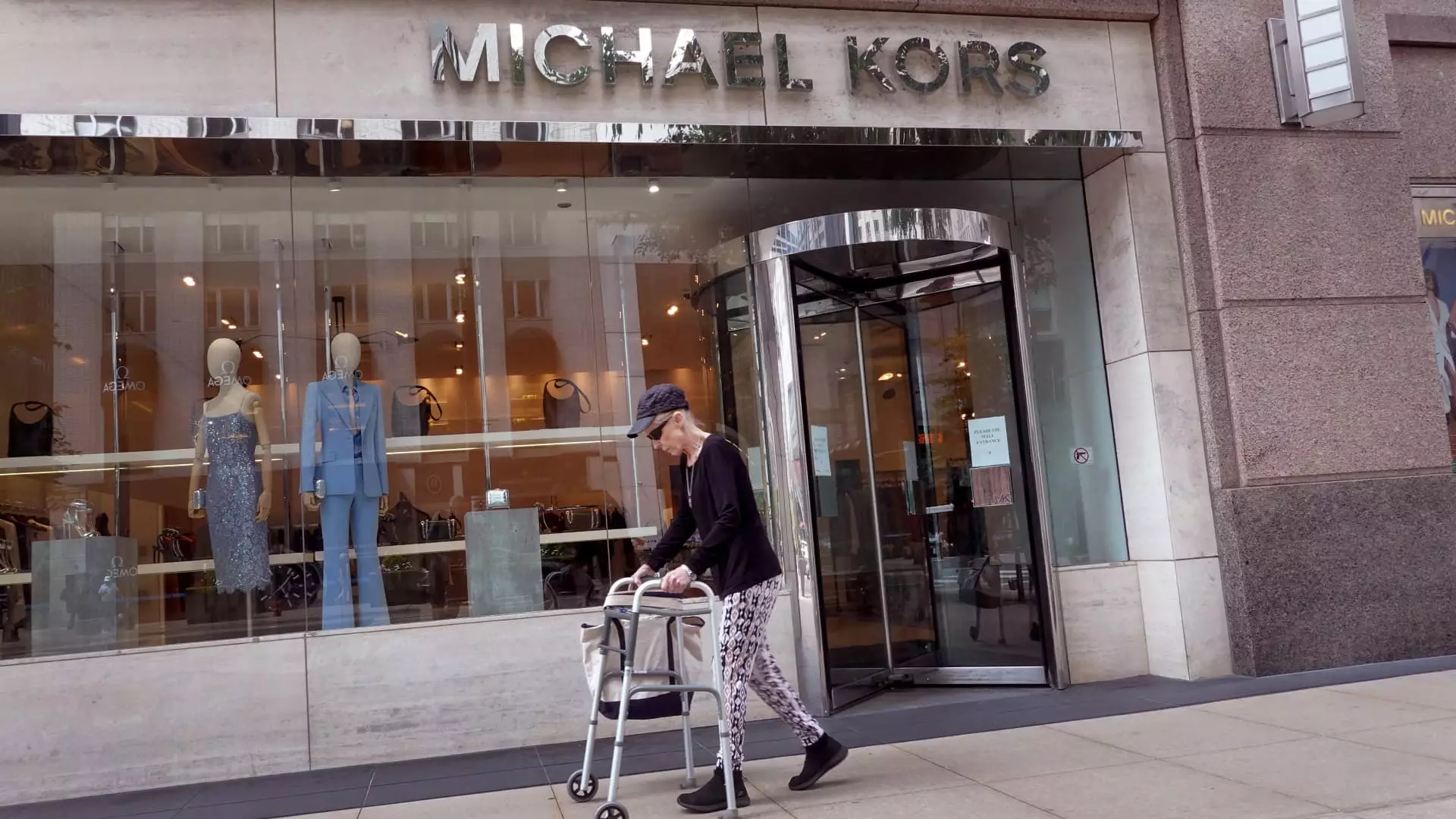The business landscape often resembles a game of chess, where strategic moves can either lead to victory or a crushing defeat. The recent announcement that Capri Holdings and Tapestry Inc. have mutually agreed to terminate their planned merger serves as a noteworthy case study in corporate strategy, regulatory hurdles, and market dynamics. Originally lauded as a transformational union of two of the largest luxury houses in America, this merger was intended to create a powerhouse with an impressive portfolio of brands. However, the involvement of the Federal Trade Commission (FTC) has thrown a wrench into these plans, prompting both companies to reassess their paths moving forward.
The Merger’s ambitious Goals
When the merger was first announced in August 2023, it promised to unite six prestigious fashion brands under one roof: Tapestry’s Coach, Kate Spade, and Stuart Weitzman would align with Capri’s Versace, Jimmy Choo, and Michael Kors. This multibillion-dollar acquisition, valued at approximately $8.5 billion, was seen as a strategic move to capitalize on synergies between the companies and enhance their competitive edge in the luxury market. The rationale was sound: by combining resources and expertise, both companies could potentially elevate their offerings and market reach. Yet, despite the initial enthusiasm, the merger quickly encountered significant regulatory pushback, revealing the complexities faced by large corporations in today’s business environment.
In April 2023, the FTC intervened, suing to block the merger on the grounds that it would impede competition and undermine consumer benefits. A federal judge echoed these concerns, granting a preliminary injunction against the deal, effectively putting a halt to the negotiations. Tapestry, although initially planning to appeal the ruling, ultimately opted for a more prudent course of action. The decision to abandon the merger has lowered the stakes, allowing both companies to pivot towards individual growth strategies rather than continuing to battle regulatory obstacles.
Capri’s CEO, John Idol, expressed optimism about the company’s future despite the merger’s collapse. In a statement following the termination, he noted, “We are now focusing on the future of Capri and our three iconic luxury houses,” emphasizing a renewed commitment to explore growth avenues independent of Tapestry. In stark contrast, Tapestry’s CEO, Joanne Crevoiserat, highlighted the company’s ability to thrive without the merger. She pointed out that the cash reserves freed up from the deal would be redirected towards a $2 billion share repurchase authorization, illustrating a strategic shift towards fortifying shareholder value.
Financially, the fallout from the abandoned merger has had tangible repercussions. While Tapestry’s stock surged approximately 10% following the FTC’s decision, Capri witnessed a staggering 50% drop in its shares. This stark contrast illustrates how investor sentiment can pivot dramatically in response to corporate developments. Although Tapestry made it clear that there would be no break fee associated with the termination, it announced its intent to reimburse Capri around $45 million for incurred expenses, further emphasizing the financial complexity surrounding merger deals.
Wall Street analysts had already begun to question the rationale behind the merger before its termination. Many expressed concerns that Tapestry was poised to overpay for Capri, especially in light of the prolonged regulatory process and the decline in Capri’s business performance. This skepticism underscores the importance of due diligence in merger negotiations, highlighting how external factors can dramatically influence corporate strategy.
Charting a Path Forward
As both companies navigate their post-merger landscapes, the focus will inevitably shift to their individual strategies for growth. Capri’s urgent need to revitalize its brands, particularly Michael Kors, which has struggled with declining sales, will likely take center stage in upcoming discussions. Idol acknowledged the importance of implementing strategic initiatives aimed at returning their luxury houses to growth, stressing the role of brand desirability through innovative communication and compelling offerings.
The termination of the Capri-Tapestry merger serves as a reminder of the unpredictability inherent in large-scale corporate collaborations. This case highlights not only the impact of regulatory scrutiny but also the significance of adaptability and strategic evolution in an ever-changing market landscape. As both companies set their sights on the future, they will need to remain agile and responsive to the dynamic challenges posed by the luxury fashion industry.

